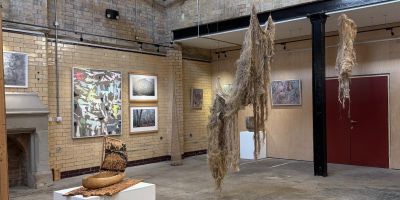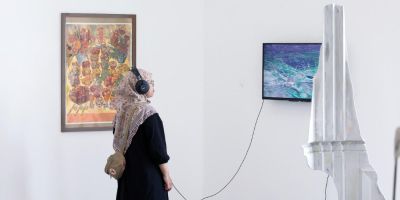A new exhibition curated by Chris Taylor opens at Treasures of the Brotherton Gallery
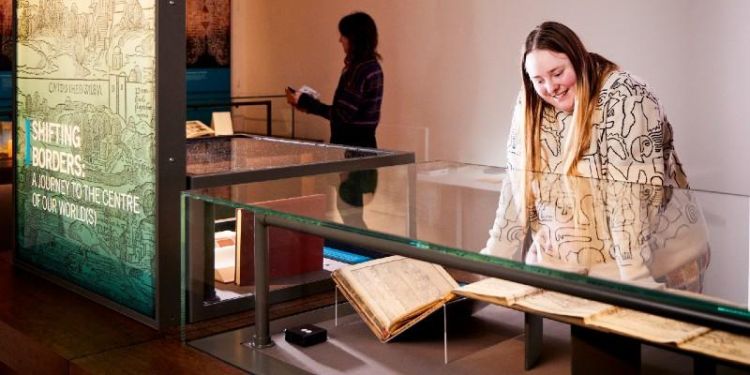
Guest curated by Chris Taylor, Shifting Borders takes the visitor on a journey across borders from Leeds to Venice and Jerusalem via the Sun and Moon.
Shifting Borders: A Journey to the Centre of our World(s) is a new exhibition for the curious explorer which delves into the world of maps from a pioneering travel guide printed in the fifteenth century to contemporary artists' books.
Maps are an integral part of our everyday lives -— we use Google Maps to find a shop, SatNav to guide our car journeys, and Ordnance Survey maps to help plan our next adventure in the mountains. Historically, they have also been a way for us to understand and visualise our world and beyond.
Open throughout the year in the Treasures of the Brotherton Gallery, this exhibition takes a deep dive into maps, guidebooks and more to explore how these documents can capture notions of place, home and nationhood, as well as being a way to express hope for a better life.
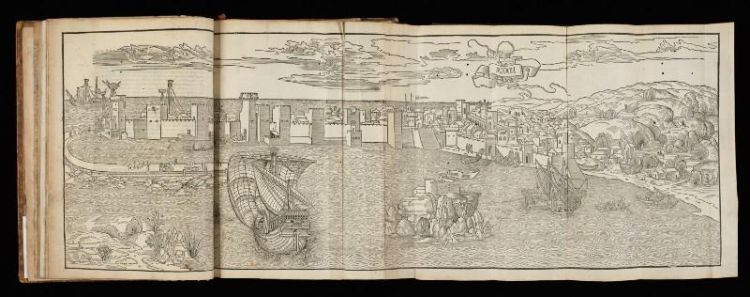
Bernhard von Breydenbach, Peregrinatio in terram sanctam, Mainz, 1486. Image courtesy of Leeds University Library Galleries.
The exhibition is curated by Chris Taylor, artist and Professor of Fine Art Practice in the School of Fine Art, History of Art and Cultural Studies. He specialises in the field of contemporary printmaking with a focus on the role of the artist’s book as primary medium. Chris said:
“It felt like a topical time to focus an exhibition on maps and borders as once again we find ourselves at an unsettling crossroads in humankind’s existence — where superpowers attempt to reinstate their historic borders of empire, and others race to become the first settlers on the inhospitable lunar surface and planets beyond.
“As we watch the daily push, back and forth, by defender and coloniser, the map is redrawn, borders realigned and streets, towns and cities renamed.”
On display will be artefacts belonging to or created by explorers, spies, scientists, mapmakers, artists and authors. The exhibition juxtaposes the work of scientists who attempt to map the universe, with personal objects that facilitate travel across our globe. It includes Edmond Halley's 1715 map predicting the path of a solar eclipse, and the travel documents of Leeds-born writer and MI6 agent Arthur Ransome.

Kim Philby’s passport on display with other material in ‘Shifting Borders’. Image courtesy of Leeds University Library Galleries.
Highlights include a British passport belonging to Harold ‘Kim’ Philby, one of Britain’s most notorious double agents. The passport was issued in March 1933 and shows numerous single journey visas to Spain, where he reported on the Spanish Civil War between 1937 and 1938.
The first ever printed travel guide with illustrations, written by Bernhard von Breydenbach and illustrated by the Dutch artist and printer Erhard Reuwich of Utrecht in the fifteenth century, is also included in the exhibition.
Alongside historical objects, the exhibition draws on the university’s significant Artists’ Books Collection. The books on display show how contemporary artists adapt the formats and structure of the map, or experiences of journeys taken, to capture current concerns regarding migration, place and history.
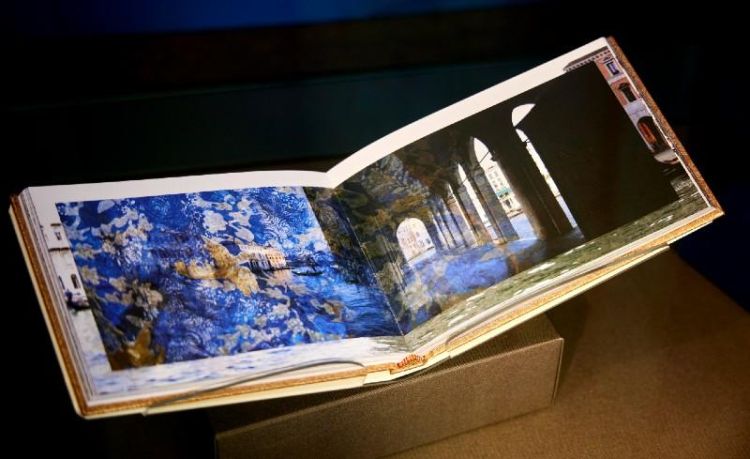
Helen Douglas, A Venetian Brocade, Yarrow, 2010. ©The Artist. Image courtesy of Leeds University Library Galleries.
Opening in January 2023, with a special celebration event on Tuesday 24 January, the exhibition showcases the depth and variety of Special Collections at the University of Leeds.
Shifting Borders: A Journey to the Centre of our World(s) runs until Thursday 21 December. Entry is free. For more details and opening times, visit the Leeds University Galleries website.
Feature image
Shifting Borders: A Journey to the Centre of our World(s) exhibition in the Treasures of the Brotherton Gallery. Image courtesy of Leeds University Library Galleries.



